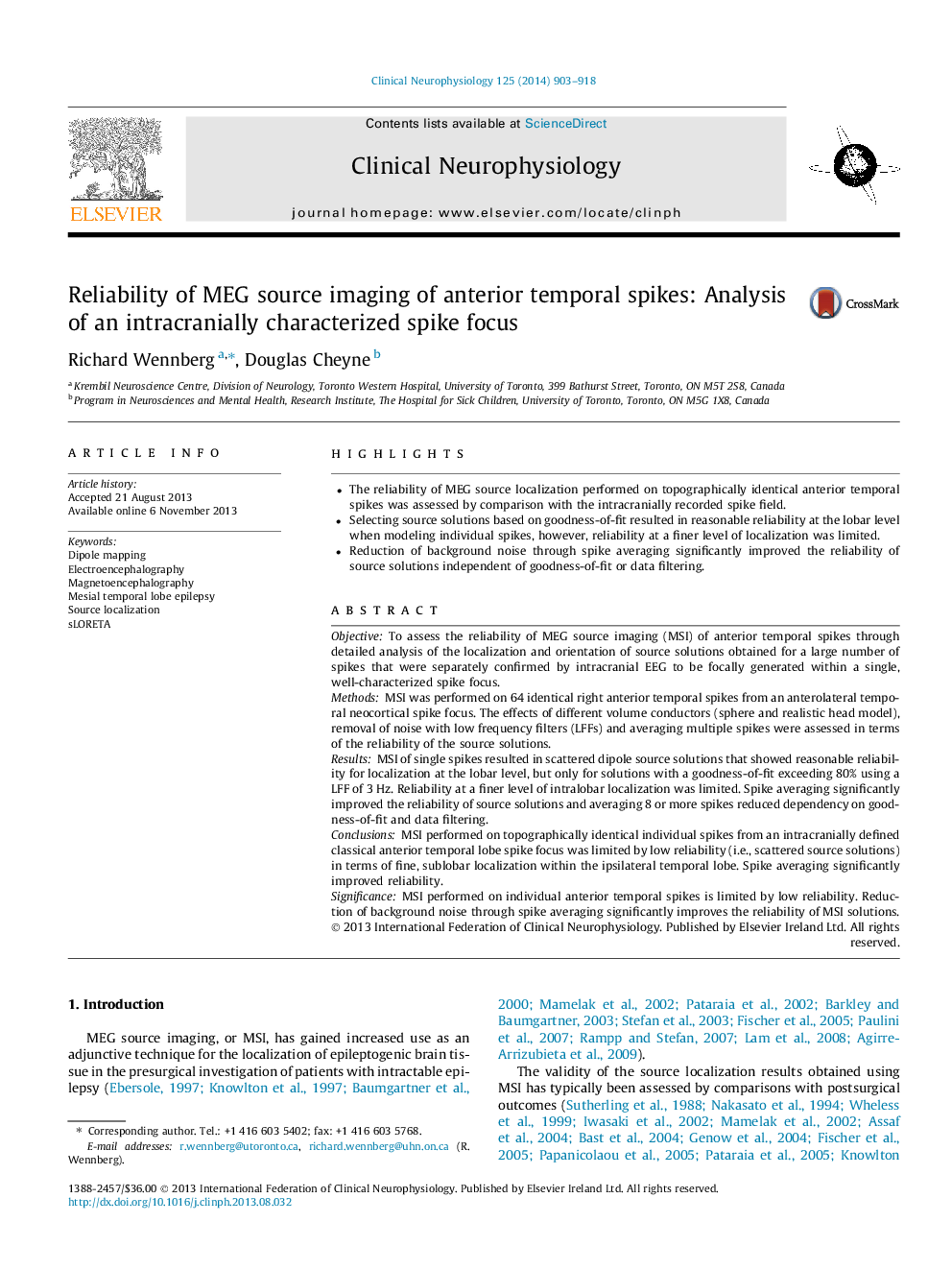| Article ID | Journal | Published Year | Pages | File Type |
|---|---|---|---|---|
| 3044074 | Clinical Neurophysiology | 2014 | 16 Pages |
•The reliability of MEG source localization performed on topographically identical anterior temporal spikes was assessed by comparison with the intracranially recorded spike field.•Selecting source solutions based on goodness-of-fit resulted in reasonable reliability at the lobar level when modeling individual spikes, however, reliability at a finer level of localization was limited.•Reduction of background noise through spike averaging significantly improved the reliability of source solutions independent of goodness-of-fit or data filtering.
ObjectiveTo assess the reliability of MEG source imaging (MSI) of anterior temporal spikes through detailed analysis of the localization and orientation of source solutions obtained for a large number of spikes that were separately confirmed by intracranial EEG to be focally generated within a single, well-characterized spike focus.MethodsMSI was performed on 64 identical right anterior temporal spikes from an anterolateral temporal neocortical spike focus. The effects of different volume conductors (sphere and realistic head model), removal of noise with low frequency filters (LFFs) and averaging multiple spikes were assessed in terms of the reliability of the source solutions.ResultsMSI of single spikes resulted in scattered dipole source solutions that showed reasonable reliability for localization at the lobar level, but only for solutions with a goodness-of-fit exceeding 80% using a LFF of 3 Hz. Reliability at a finer level of intralobar localization was limited. Spike averaging significantly improved the reliability of source solutions and averaging 8 or more spikes reduced dependency on goodness-of-fit and data filtering.ConclusionsMSI performed on topographically identical individual spikes from an intracranially defined classical anterior temporal lobe spike focus was limited by low reliability (i.e., scattered source solutions) in terms of fine, sublobar localization within the ipsilateral temporal lobe. Spike averaging significantly improved reliability.SignificanceMSI performed on individual anterior temporal spikes is limited by low reliability. Reduction of background noise through spike averaging significantly improves the reliability of MSI solutions.
